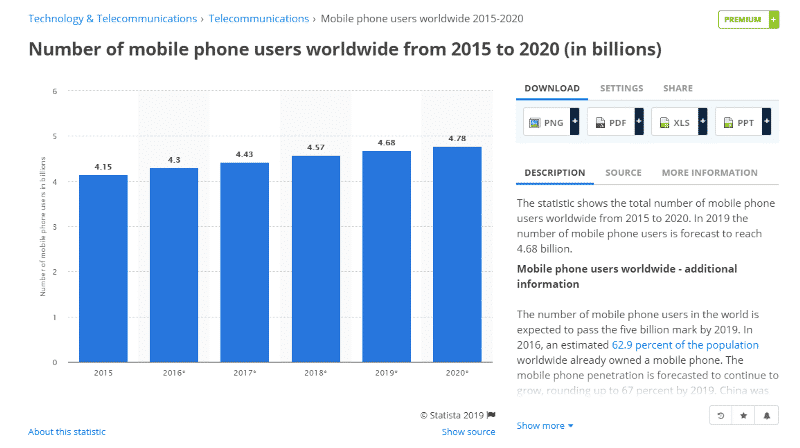A step-by-step simple guide for fellow marketers.
The world of marketing is a constantly evolving one. It was just years ago social media went from being a past time to a recognize marketing platform (well, we’re all on it!) fragmenting focuses from traditional prints like newspapers and hard copy magazines.

How do we foresee what’s coming ahead? How do we know if we’re on track? Being a fellow marketer, you’re bound to face a couple of challenges in this very exhilarating field, but there are ways to navigate around it. Let’s start!
For the sake of assuming that we’re starting from scratch and that means we do EVERYTHING. In established companies, there tends to be a razor focus on specific skill sets but that’s quite the opposite with organic sized teams. What is the same, is the need for a great marketing plan. These plans vary accordingly to factors such as
- client focus/objectives
- marketing budgets
- company size
- industry and customers specifications
Set clear marketing objectives
Make no mistake that marketing business-to-business (B2B) and business-to-consumer (B2C) are just different narratives altogether. In a B2B conversation, it’s good to ask relevant questions:
- who are your customers?
- what is the size of the company?
- what are the targeted industries?
This needs to be turned into a clear monthly and annual plan with specific (number) targets. Here are some examples:
- Project sales: $2m
- SME — 1500 customers/year (125/month)
- Enterprise — 180 customers (15/month)
- Brand Awareness — 50% (of decision-makers in the finance industry), 10 features across various publications
Get the big picture?
What channels are you hitting?
The art of crafting a good marketing plan is to also know the existing channels within your fingertips and to fit the right industries across the right channels. Gone are the days people dig deep into newspapers to look for a job — it’s shifted to platforms like LinkedIn, Indeed, SEEK, and much more.
So once you’ve clearly defined your targeted audience, use this to pick the channels and media plan that will match your messaging content. Here are the types of marketing channels with projected goals:
- Lead Generation ($1 CPC — targeting Malaysia, Singapore, and Thailand)
Note: The cost of lead gen varies according to industries.
- Content Marketing / Social Media Ads (on the company’s Facebook, Instagram, LinkedIn, and Twitter channels)
- Email Marketing (building email database of 5000 emails, sending 2 newsletters per month)
- PR (monthly coverage in top tier industry publications)
- Events (tradeshows, 2 events per month with 20–30 decision-makers)
So it’s easy to see that you’re picking the channels to effectively communicate and reach out with set objectives.
Communications strategy
The terms “communications strategy” is often viewed as a hefty term but not fully understood. What it comes down to is this — communicate, strategically. We’ve defined our audiences, set goals, and picked out the channels, now let’s look at how we can distribute the message effectively.
In the strive to communicate effectively there are 3 components:
- precise language (don’t confuse people)
- time of communications (peak hours)
- method of communication (blog, video, infographic?)
Select a big theme and create sub-themes to help you present your communications in a string of variety. For example, talking about “Tech Industry”, while ‘tech’ is established as the main theme, here are alternate sub-themes to introduce in the content messaging:
- Choosing The Right Tools In a Tech Space — Tools, project management
- Tech & Games — Industry update
- A Day In The Life of a Project Manager in Tech — HR, culture, career
- Transforming Your Finance Applications With Tech — product update/info, product education
So while you’re constantly drumming in the “tech” tune, you’re positioning it differently. Each messaging has a separate focus but it all brings it back home — tech.
Topic #3 can be delivered as a recorded interview where the audience can connect, feel, and, gage the situation based on what the actual person said. Topic #4 can be delivered as an infographic. Thus using the right platforms are crucial in order to keep the essence of the message alive.
Marketing platforms and their purposes
We’ve come to a point where social media has passed its social phase dedicated to entertainment alone, it’s now a networking powerhouse. Fast forward to this day, you’ll see an influx of professional brands and services hogging their share of this digital space. Wearesocial reported 4.39 billion internet users in 2019, there’s just natural gravitation to this space.

So how do you build your brand awareness and how do they complement the content you have in hand?
- LinkedIn — connect professionally, build business networks, fit for career discussions
- YouTube — host infomercials, product tutorials, interviews, AMAs
- Medium — blog/content/SEO
- Twitter — broad awareness, community engagement
- Facebook — awareness, culture update, product update, casual conversations
- Instagram — images, videos, live feed
These platforms are generally low cost and are used for content marketing, a very effective brand building strategy when you’re on a budget. If you have a bigger budget in hand, lead generation is something you may want to play around with (I’ll cover this in my next blog post).
Budgets and reports
It goes without saying marketing is crucially time-sensitive, hence it would be good to strike the iron when it’s hot. You don’t want to be talking about Game of Throne next month when the season ends next week. The hype and buzz are NOW.
It’s imperative to device your plan according to the budget you’re comfortable with. Don’t blow your budget just because you have big plans! Research market prices and scout for marketing tools that are free to use. Start out with an excel sheet for your project timelines and budget (it’s free).
The final part is what most people fear — ROI (or KPI?)! In other words, results. While there’s no denying defining marketing ROI is tricky, the one useful thing to keep in mind is — it varies according to the customer/business needs. All you need to do is follow the laid out steps above and begin your plan down to every detail. Once you see the big picture, every little component above becomes a matter of execution.
Bonus: For all the marketing that you do, make sure you’re hitting mobile marketing too! Statista reported an estimate of 62.9% of the worldwide population using mobile phones. You bet the numbers are only going to grow from here.

Remember, it’s not hard at all, it’s just a matter of planning. Best of luck in developing your next marketing plan!
Jia nina is a Marketing & Communications Consultant in the Games industry with expertise extended to PR and Business Development. When she's not busy evangelizing about game development, she's writing about movie reviews, articles related to marketing, games, tech, and, personal development. Currently in Malaysia/Singapore. Connect with her via Twitter or LinkedIn.



















